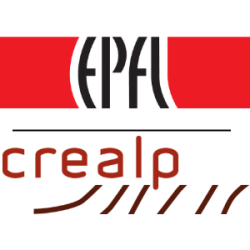
Ricardo is a Civil Engineer (Meng in Civil Engineering) who specialises in computational hydraulics (MSc in Hydro-Informatics and Water Management), with experience in Free-Flow Computational Hydraulics, Flood Risks Assesments, Sediment Transport, Data (and geo-Data) Analysis, and New Technologies.
![]()
Native Speaker
![]()
Cambridge C1
![]()
B1
Career
Hydraulic Engineer

💼 Arcadis
📅 November 2020 - Present
🌍️ Birmingham, United Kingdom
I provide technical inputs to flood modelling processes in fluvial and pluvial scenarios. My technical input varies between projects, such as large reservoir studies (as per the Reservoir Act 1975), UK flood studies and Australian flood studies. The tasks in these studies may require the computational hydraulic model set-up including different scenarios and optioneering; checking the model build and the results, reporting, damage analysis on properties, flood forecasting curves calculation, flood compliance or wave overtopping compliance calculations. A non-exhaustive list of these studies would include Tringford Flood Study, the March High Flood Study, the Rotton Park Flood Study, the Otterpool Park Feasibility Report, the A320 Junction 6 Flood Risk Assessment, the River Monnow Flood Forecasting and Risk Assessment, Cleveland Road Redevelopment Flood Study, and the new Sidney Metro Line Flood Risk Assessment.
I am a vital member of the innovation strategy of Arcadis’ Hydrology and Hydraulic team. I have developed several tools and processes to improve the delivery time, minimize errors and avoid task repetition.
Since late 2022, I have become an Arcadis’ Technical Lead for HydroNET. HydroNET is part of Arcadis portfolio and it is a GIS web-based decision support system with a clear focus on environmental, weather and water data domains. HydroNET can be fed with information from different origins, this data is then processed and displayed as a set of dashboards to support the decision process. As a Technical Lead, I am in charge of the initial data processing, loading the data into the back-end system, managing the front-end for our clients, and supporting our clients with their queries.
Hydraulic Engineer

💼 Jacobs
📅 October 2017 - November 2020
🌍 Swindon, United Kingdom
I have worked as a hydraulic modeller developing and calibrating Flood Modeller / TUFLOW models to extract the results and presented them in a readable form for different flood risk analysis according to our clients specifications. For instance, I have been a key part of the Reading and Caversham Flood Alleviation Scheme, Thames Appraisal Package, and Thames Estuary Asset Management 2100 program. I have developed models using MIKE 21 that includes sediment transport, to observe possible erosion or sedimentation at the navigable parts of the lower Danube for the FAST Danube project.
I have designed and tested existing culverts on the A9 dualling project following the CIRIA and HEC guides to match the requirements of the SEPA agency. As part of the Flood Modeller support team I have been responsible for testing, benchmarking, answering supports queries, and writing part of the documentation and the support website of the Flood Modeller software from version 4.4 to version 4.6.
I have developed different dashboards for our client (Environment Agency) using Excel VBA, this has been done for the Lower Stour – Travel Time Tool as well as for internal queries related to Flood Modeller use. During my team at Jacobs, I have performed some data analysis, mostly cleaning raw data to make it usable, as well as helping the GIS team in the production of different plots.
Software Developer (Internship)

💼 Ch2m Hill
📅 March 2017 - September 2017
🌍️ Swindon, United Kingdom
CH2M Hill sponsored my Master Thesis “Application of Cloud Computing to Hydraulic Modelling” done at the end of my MSc in Hydro-Informatic and Water Management. I developed a cloud system that was able to upload, run and retrieve simulations to Amazon Web Services cloud in order to be studied for the aforementioned thesis. My code was later implemented into Flood Cloud, the company’s cloud system.
Environmental Software Developer (Internship)

💼 EPFL & CREALP
📅 June 2016 - September 2016
🌍 Lausanne & Sion, Switzerland
I worked in collaboration with the research centre CREALP and the EPFL in the development of the TeREsA software. TeREsA is a software for environmental data analysis developed in the R language and divided in different modules. I worked in the development of the Data Filling and Data Spatialization modules, as well as in the redaction of the associated documentation.
Deputy Site Manager

💼 Acieroid
📅 February 2014 - July 2014
🌍 Saint-Omer, France
As part of my bachelor internship I worked as a project management assistant at Saint-Omer’s auditorium site construction. I was in charge of the quality, health, and safety controls. I was also in charge of the request/return of the site machine according to the site’s plan and logging the worked hours of our subcontractor.
Education
MSc. in Hydro-Informatic and Water Management

🎓 Euro Aquae Consortium1
📅 2015 - 2017
🌍 Barcelona (ES) - Newcastle (GB) - Cottbus (DE)
Two years coordinated Master among several universities (EuroAquae program). Ricardo built theoretical and practical expertise in managing hydrological systems, particularly in quantitative and technical aspects of modelling surface water and ground water.
MEng. in Civil Engineering

🎓 University of Granada
📅 2009 - 2014
🌍 Granada, Spain
Spanish 5 years official bachelor’s and master’s degree. In this period, Ricardo developed theoretical expertise in the basis of Civil Engineering: road/railway design, steel/concrete structures design, geotech, coastal/ports engineering, management, sanitation and hydraulic/hydrology.
Formed at the time by: Polytech University of Catalonia (Spain), Newcastle University (Great Britain), Brandenburg University of Technology (Germany), Budapest University of Technology and Economics (Hungary), and Nice Sophia Antipolis University (France)
↩︎